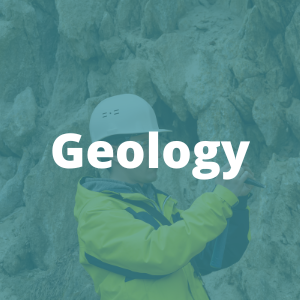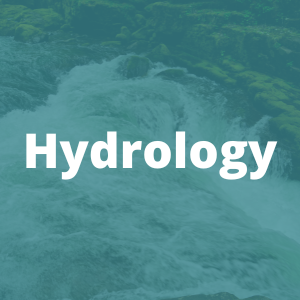
What animals live in the area?
What the ground material that the road will be built on consists of?
How the road will interact with water sources, what affect the addition of the road will have on air quality?
What sites of cultural heritage may be along the route?
There are a number of environmental professionals employed to work on the A9, Ecologists, Geologists, Hydrologists, Air Quality Specialists to name a few.
If you want to know more about the careers on the A9 then see our careers page here.


A9imal (P2-P7 level 1 and level 2 CfE)
A9imal is an Academy9 activity to introduce pupils to some of the animals located along the A9 corridor and some of their key traits.
This information is then used to allow pupils to create their own A9imal using these key traits.
First level provides pictures and descriptions
Second level just provides the pictures so pupils can be asked to work out what the key traits are for each animal.
Es and Os, LIT 2-15a, LIT 2-24a, LIT 2-26a, EXA 0-01a, EXA 1-01a, EXA 2-01a, EXA 2- 02a, TCH 2 – 03
Nature Detective (P5-P7 level 2 CfE)
Nature Detective is an Academy9 activity which aims to investigate the role of an ecologist on the A9 Dualling project by identifying plants or animals located along the A9 by looking for clues or evidence left behind.
The videos provide pupils with an opportunity to see badgers, otters, bats and squirrels in their natural habitat.
These could be used to support a biology or geography lesson or as part of the Nature Detective activity.
Es and Os, HWB 2- 20a/HWB 3- 20a/HWB 4-20a, SOC 2-08a, SOC 2-08b, SCN 2-02a, LIT 2-02a

Environment Scotland’s Map (S1-S6)
The link below will take you directly to the Environment Scotland’s State of the Environment Report Map.
This is a useful tool which displays numerous environmental datasets under four headings: Air, Water, Land, and People and the Environment.
Some of the available data layers include air quality monitoring points, water quality and bathing areas, types of land uses and designated areas, and statutory conservation areas including Sites of Special Scientific Interest (SSSI).
Multiple layers can be selected using these dropdowns in the Table of Contents.
As these are selected the legend will be updated on the right-hand side and the map will display these points or areas.
Clicking on the layers will open a results table which provides more detailed information and links to data.
This could be a useful tool in supporting a geography lesson. Pupils c
ould list all potential receptors of a proposed development (i.e. an incinerator) within proximity of a given location.
CLICK HERE to access the Environmental Map Website
National Biodiversity Network (NBN) Interactive Species Map (S1-S6)
The link below will take you directly to the NBN interactive map and search engine named Atlas.
This website is one of the most efficient ways of searching for specific species and habitats in the UK.
You can search for species, habitats or designated sites using the search bar at the top of the page.
The easiest way to search for species is using the ‘Locations’ function.
The user can either manually draw up an area of interest using the ‘search by polygon’ tab or can use a specific area (e.g. national grid reference) and study area radius using ‘explore by address, postcode or location’.
The latter function will allow the species groups (i.e. fish) to be individually selected and explored from the list on the left of the map.
Once a species has been selected from the list, clicking ‘list of records’ will show when and where exactly this species was identified.
This could be a useful tool in supporting a biology lesson.
Pupils could be asked to find the closest record of a species (or a given list of species) from their home and then use the internet to determine information of this species including the level of statutory protection.
Soils Scotland Land Capable for Agriculture (LCA) Map (S1-S6)
The link below will take you directly to Soils Scotland LCA Classification map.
This uses physical characteristics such as climate, topography and soil to determine how well crops will grow in certain locations.
By opening the legend at the top right-hand corner of the map, the coloured layers and their associated classification can be interpreted.
This could be a useful tool for a geography lesson.
Pupils could assess what classification the land is within proximity to their home.
CLICK HERE to access the website
Ancient Tree Hunt (S1-S6)
The link below will take you directly to the Woodland Trust’s Ancient Tree Hunt Interactive Map.
This map can display ancient, veteran and notable trees, ancient woodland and woodland under threat, and other woodland features such entrances and parking locations.
Any given feature can be selected, and an information page opens from the hyperlink which displays more species information including reasons for designation and pictures.
This could be a useful tool in supporting a biology or geography lesson.
Pupils could be asked to find the location of a particular tree or woodland and discuss the importance of protecting this feature (landscape / cultural / ecological / economic value).
CLICK HERE to access the website

Scottish Natural Heritage’s (SNH) Green Network Map
The link below will take you directly to SNH’s Central Scotland Green Network Map.
This map displays different types of connected habitat networks including types of wetlands, woodland, and grassland.
You can select a habitat network you to wish display from the key on the right-hand side and then manually zoom in or use the search function at the top of the map to display this at a specific area.
This data is an indicative representation and does not provide specific information of the layers.
CLICK HERE to access the website
Joint Nature Conservation Committee (JNCC)
The link below will take you directly to the evidence page of the Joint Nature Conservation Committee.
Here you will find an explanation of the part JNCC play in providing evidence to protect the natural environment in the UK and beyond.
For further information click on one of the tabs across the main bar, including information on the work of JNCC, advice around environmental sustainability and relevant news in the sector.
CLICK HERE to access the website


Ground Beneath Our Feet (P5-P7 level 2 CfE)
Ground Beneath Our Feet is an Academy 9 activity which aims to investigate the geology along the A9 and describe what a geologist does.
This is then linked to the process of designing and building a road and how the geology affects decisions made.
Es and Os, HWB 2-20a/HWB 3-20a/HWB 4-20a, SCN 2-17a, SCN 2-04b, SOC 2-08b, LIT 2-09a, LIT 2-10a / LIT 3-10a

Borehole Data Files (S4-S6)
Below you will find real examples of borehole drill data derived from sections of the A9.
These files contain the descriptions of strata types found at different depths of the borehole.
Within the folder is a file named ‘Notes on Exploratory Hole Records’.
This technical guidance provides lots of general information including the methodologies that can be used to sample soils and detailed descriptions of the types of soils and their usual characteristics.
These files could be used to support a geography lesson.
Pupils could be asked to look at the borehole data samples and describe the characteristics of the strata present.
The ‘Key to Borehole Records’ section (tiled images of types of soils/rocks) within the Notes on Exploratory Hole Records file should be used as a legend to explain the cross-sectional data within the real examples.
British Geological Survey (BGS) Viewer (S1-S6)
The link below will take you to an overview of the BGS Viewer mapping system.
By clicking on the image of the map or on the ‘Open Geology of Britain Viewer’ the interactive map will be opened.
Zoom in to an area of interest and click the Geology Key on the left-hand side to interpret the map.
Clicking on a geological feature within the key will open a new page with general information about this type.
This map also allows borehole scans, 3D borehole model cross sections, and earthquake data to be viewed.
These can be accessed by clicking the tabs at the top of the map.
This could be a useful tool in a geography lesson.
The 3D model function is an engaging tool which demonstrates the composition and types of rocks present within a chosen section of earth.
Additionally, the borehole data files found lower on this page can be used to support this lesson as they provide real examples of borehole data taken on the A9.
The teacher could expand into why it is important for infrastructure projects to explore the geology along the route corridor before finalising design – for structural and financial security (to avoid soft / sinking stratas) and to avoid sensitive areas (ecological, geological or hydrological / flooding).
CLICK HERE to access the website

Soils Scotland Map
The link below will take you directly to Scotland’s Soils interactive map.
The types of soil can be interpreted and selected by clicking on the ‘Show map legend and layers’ link at the top of the map.
Alternatively, clicking on a layer will produce a detailed table below the map with information about the selected soil.
CLICK HERE to access the website
National Library of Scotland
The link below will take you directly to the National Library of Scotland’s online mapping collection.
This is a useful resource when assessing a particular site.
By taking into consideration a site’s history will help to inform decisions about the site’s future use.
CLICK HERE to access the website


SEPA Rainfall Data Map (P5-P7 Level 2 CfE)
The link below will take you directly to SEPAs Rainfall data for Scotland mapping system.
Clicking on a dot will display the associated rainfall data for the station on the right-hand side.
An investigation into rainfall in different locations could be an interesting addition to learning about the water cycle.
This data could be used to produce graphs and charts or to interpret data from graphs and charts to support numeracy curriculum.
Es and Os, SCN 2-05a, MNU 2-20a
CLICK HERE to access the website

Scottish Environment Protection Agency (SEPA) Flood Map (S1-S6)
The link below will connect you to SEPA’s Flood Risk Management mapping system.
Firstly, zoom in to an area of your choice or use the search function to view the flood data.
Then proceed to follow steps 1 and 2 provided in the menu which will allow you to select the flood data you would like to be displayed.
Use the legend at the right-hand side to interpret the colours given on the map.
This could be a useful tool in a Geography lesson.
Pupils could assess the impact of flooding from a hypothetical proposed new road (considering river, surface water and perhaps even coastal flooding).
CLICK HERE to access the website
SEPA Water Level Database (S1-S6)
The link below will connect you to an overview of the available data collection sites.
Select ‘Map Search’ from the blue headings.
Pan in and click a red dot to provide a summary of the associated water level.
Specific tabular (spreadsheet) data can be downloaded by clicking ‘Level Data’ in the table.
This could be a useful tool in a Geography lesson.
This could be used in conjunction with the SEPA Flood Risk Management Map and SEPA Rainfall Data Map.
Pupils could evaluate the water levels, average rainfall and other physical features they can spot (relief, built up areas / flood plains etc.) and assess the flooding risks of two ‘proposed roads’ and determine the least intrusive location.
They could then use SEPA Flood Risk Management Map which will show the current flood risk.
CLICK HERE to access the website
SEPA Water Environment Hub – Classification Database (S1-S6)
The link below will connect you to SEPA’s Water Environment Hub mapping system.
Using the search ‘Pan Narrative’ on the left-hand side will allow you to sieve for official classifications of quality, physical condition, fish migration, water flows and levels on different types of waterbodies.
This could be a useful tool in a Geography lesson.
Pupils could identify the classification, physical condition, fish migration etc. of the river closest to their home.
CLICK HERE to access the website
SEPA Bathing Water Areas (S1-S6)
The link below takes you directly to SEPAs Bathing Waters results for Scotland map.
Clicking on a dot will provide you with the Escherichia coli (E. coli) and Intestinal enterococci levels as well as the historical classification record.
The URL ‘Bathing Water profile, including further information and maps’ contains in depth information, images and maps of the selected waterbody.
This could be a useful tool in a Geography or biology lesson.
Pupils could identify a bathing water location closest to their home and the levels of E.coli and enterococci present; as well as its classification status.
Pupils could use the Water Environment Hub (above) to identify any other characteristics of this waterbody.
Pupils could then research E. coli and enterococci and their associated health implications.
CLICK HERE to access the website
Scotland’s Environment Interactive Map (S1-S6)
The link below will take you directly to the Scotland’s Environment interactive mapping system.
This mapping system provides a lot of data concerning air, water, land and people and the environment.
Under the Water drop-down box on the left will provide accessible layers of energy, fishing, quality, heritage and monitoring and classification layers.
Zoom in to an appropriate scale to activate the selected layers.
Clicking on the activated layers will provide you with another drop box containing additional information.
This could be a useful tool in a Geography lesson.
Pupils could list as much information possible about a particular water body and report any results (i.e. needs better management or it is likely to flood).
Google maps is a useful tool to determine characteristics about rivers i.e. meandering could mean it is slow moving, hydropower stations on the tributaries could result in low flow, flood plains / built up areas could result in increased flood risk.
CLICK HERE to access the website


Air Quality in Scotland (P5-P7, level 2 CfE)
The link below will take you directly to the Air Quality in Scotland’s education web page.
This web page provides a link to two air quality resources aimed at school pupils.
These are briefly described below:
The ‘Air Pollution Detectives’ website is designed to accommodate active learning in primary school pupils.
The pupils are lead through a series of informative pages detailing contaminants, their sources and how we can help to reduce them.
The clouds at the top right can be used to navigate through the website and link you to ‘Home’, ‘Suspects’ (pollutants), ‘Crime Scene’ (sources), ‘How does it affect me?’ (impacts), ‘What can I do’? and ‘Climate Change’.
This web page is interactive and requires pupils to click on images to reveal answers and also provides quizzes to enhance learning.
Es and Os, SCN 2-04b, TCH 2-06a
CLICK HERE to access the website

Air Quality in Scotland (S1-S6)
The link below will take you directly to the Air Quality in Scotland’s education web page.
This web page provides a link to two air quality resources aimed at school pupils.
These are briefly described below:
The ‘Clean the Air’ website can also be accessed by the link below and this produces an informative resource for young teenagers.
By using the tabs at the top of the page pupils can learn about the types of pollutants, their health implications, monitoring strategies, and how we can mitigate these impacts.
The web page also provides interactive tools where pupils can investigate the air quality status at their home or school and calculate their own transport emissions.
CLICK HERE to access the website
Clean the Air (S1-S6)
The ‘Clean the Air’ website can be accessed by the link below and this produces an informative resource for young teenagers.
By using the tabs at the top of the page pupils can learn about the types of pollutants, their health implications, monitoring strategies, and how we can mitigate these impacts.
The web page also provides interactive tools where pupils can investigate the air quality status at their home or school and calculate their own transport emissions.
CLICK HERE to access the website
Air Quality Scotland Interactive Maps (S1-S6)
The Air Quality in Scotland website also provides a detailed air quality interactive map, as found below.
This map provides the location of pollutant data set readings across Scotland.
By selecting one of these points more information can be accessed by clicking ‘View full site data and information’.
Once selected, pollutant type and quantity data will be displayed in a table.
By using the blue tabs above, pupils may access the selected data in infographic form, compare the data with average statistics, or display the site information and pictures.
These links are useful in supporting a geography lesson.
The interactive map displays how urban areas generally have higher air pollution levels than in rural areas.
Pupils could be asked to investigate why one area has a higher pollution level than another.
Pupils can use the site information section provided on the map along with other resources such as google maps and google search.
The questions pupils could ask themselves to produce an answer could be: Where is the nearest road? What is the traffic like? What is the topography?
CLICK HERE to access the website


Historic Environment Scotland PastMap (P5-S3, level 2-4 CfE)
The link below connects to an interactive PastMap which displays all recognised cultural and historical assets in Scotland.
Zoom into an area and the legend on the left-hand side will activate.
The legend contains listed buildings, canmores, scheduled monuments, designed landscapes, battlefields and other designated and non-designated cultural assets.
Clicking on an asset provides a pop-up box which lists the name, type, ID, and district council. Further information is provided by Royal Commission on the Ancient and Historical Monuments of Scotland (RCAHMS) or Historic Scotland and can be accessed within this box.
PastMap could be useful in supporting either geography or history lesson.
History teachers could use map to show the different types of cultural assets and their historic significance.
Geography teachers could use this in a lesson to support sustainability as cultural heritage is now considered a key construct in sustainability.
Pupils could be asked to find designated assets within proximity to their home or school and be asked to find out why these assets are recognised.
Es and Os, SOC 2-02a
CLICK HERE to access the website

Cultural Heritage Technical Note – Flood defence earthworks at Ruthven Barracks (S4-S6)
Historic map analysis is used to determine whether the flood defence earthworks to the north of Ruthven Barracks at the Spey Crossing are “contemporaneous” (meaning existing at or occurring in the same period of time) with the construction and operation of the barracks or are later additions.
This is done to see if they are considered as related under any Scheduled Monument / A Listed Building assessments. These assessments are a key part of the legally required Environmental Impact Assessment (EIA) associated with engineering projects like the A9 Dualling.
This could be used to support a geography or modern studies lesson.
For further useful resources for understanding the role of cultural heritage in the A9 dualling, please use the following resources:
CLICK HERE to access the Environmental Impact Assessment
CLICK HERE to access Advice and Support












